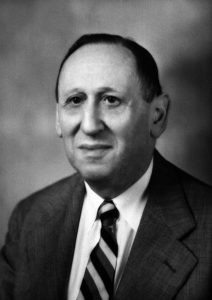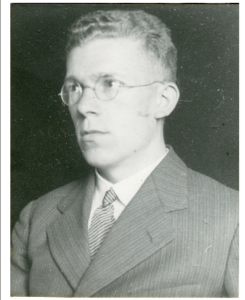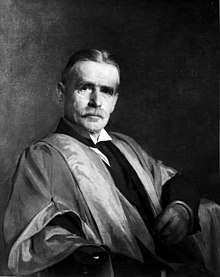19 Neurodivergence
Autism Spectrum Disorder (ASD)
Autism Spectrum Disorder (ASD) is one of the most researched disorders in the field of child psychology. The term “autism” was created by psychiatrist Paul Eugen Bleuler in 1910 to describe a symptom of schizophrenia. It is unique due to the large spectrum of different symptoms individuals with the disorder can have. The primary symptoms of ASD include deficits in social interaction, sensory impairment and difficulty with expressing appropriate emotion.
Grunya Sukhareva (1891–1981)
Grunya Sukhareva was a Ukrainian Jewish psychiatrist who was the first to describe the symptoms of Autism Spectrum Disorder (ASD) but largely went unnoticed for her work.
Sukhareva was born in Kyiv, Ukraine, where she also graduated from the Kyiv Medical Institute in 1915 (Sher & Gibson, 2021). Sukhareva worked as a psychiatrist for a few years after graduation, and in 1921, she created a therapeutic school for children with mental disabilities at Moscow’s Psychoneurological Department for Children. There, she observed and reported on the psychiatric conditions of the children she treated. In 1926, Sukhareva published the paper Die schizoiden Psychopathien im Kindesalter [The schizoid psychopathies in childhood], which provided a description of the autistic traits of six boys observed across two years, reporting on their psychiatric symptoms, motor impairments, and contrastingly high levels of intelligence (Manouilenko & Bejerot, 2015; Posar, 2017). Moreover, she predicted that the cerebellum, basal ganglia, and frontal lobes were underlying this condition— areas which modern studies have demonstrated to be involved in ASD. Importantly, Sukhareva noted the sex differences in autistic patients, and how autistic symptoms presented differently in boys and girls (Sher & Gibson, 2021).
Two other scholars, however, are credited with providing the first descriptions of ASD-like symptoms: Leo Kanner and Hans Asperger, who first published their observations in 1943 and 1944, respectively (Manouilenko & Bejerot, 2015). However, it is not known whether Kanner or Asperger were aware of Sukhareva’s 1926 article. Also, the fact that her work went relatively unnoticed for so long could have been due to a number of societal and geographical factors. Nevertheless, it is important to give Sukhareva recognition now that her work has resurfaced and evidently provides a very astute representation of childhood ASD.
References
Sher, D. A., & Gibson, J. L. (2021). Pioneering, prodigious and perspicacious: Grunya Efimovna Sukhareva’s life and contribution to conceptualising autism and schizophrenia. European child & adolescent psychiatry, 1-16.
Manouilenko, I., & Bejerot, S. (2015). Sukhareva—Prior to Asperger and Kanner. Nordic Journal of Psychiatry, 69, 1761–1764. https://doi.org/10.3109/08039488.2015.1005022
Posar, A., & Visconti, P. (2017). Tribute to Grunya Efimovna Sukhareva, the woman who first described infantile autism. Journal of Pediatric Neurosciences, 12, 300. https://doi.org/10.4103/jpn.jpn_46_17
Leo Kanner (1894-1981)

Leo Kanner was the first child psychiatrist in the United States and greatly contributed to identifying Autism Spectrum Disorder (ASD).
Kanner was born in modern-day Austria to a Jewish family (Sanua, 1990). In 1921, Kanner received his medical degree from the University of Berlin and worked as a cardiologist before moving to the United States in 1924. In the US, Kanner worked at Johns Hopkins University and largely taught himself child psychiatry through reading. Kanner went on to become the head of the first child psychiatry department in a pediatric hospital in the US. In 1935, Kanner published the first English book on child psychiatry, Child Psychiatry. In 1943, Kanner published foundational work on ASD in Autistic Disturbances of Affective Contact* (Rosen, Lord & Volkmar, 2021). In this paper, he described his experiences with eleven children who had “inborn autistic disturbances of affective contact” (he later termed it “early infantile autism”). He stated that these children have difficulty with change and social interaction, and presented stereotyped movements. Kanner’s paper provided one of the first clinical descriptions of ASD and eventually led to the addition of ASD to the DSM III in 1980.
Although Kanner’s work set the foundations for ASD as a clinical diagnosis, he also introduced important ideas on diagnoses and views of ASD (Sanua, 1990). Kanner emphasized the importance of understanding the child’s background before diagnosis, such as their family and social environment. Kanner also condemned society’s harsh views of intellectually disabled children and advocated against their abuse. He felt empathy towards differently-abled children and their families and therefore was disgusted by the Nazis regime’s eugenic practices of exterminating the “feeble-minded”. Kanner was also one of the first people to propose that ASD is not simply the product of poor parenting, and that there are innate factors which contribute to ASD (Harris, 2018). Such a statement laid the groundwork for research on genetic determinants of ASD. Finally, Kanner described that autistic children can be very gifted, and can perform highly on cognitive tasks, such as those relating to memory and language.
Dr. Kanner’s contribution to ASD research and awareness cements him as the father of child psychiatry and a model of an empathetic and humanistic physician.
References
Harris, J. (2018). Leo Kanner and autism: a 75-year perspective. International Review of Psychiatry (Abingdon, England), 30(1), 3–17. https://doi.org/10.1080/09540261.2018.1455646
Rosen, N. E., Lord, C., & Volkmar, F. R. (2021). The Diagnosis of Autism: From Kanner to DSM-III to DSM-5 and Beyond. Journal of Autism and Developmental Disorders, 51. https://doi.org/10.1007/s10803-021-04904-1
Sanua, V. D. (1990). Leo Kanner (1894?1981): The man and the scientist. Child Psychiatry & Human Development, 21(1), 3–23. https://doi.org/10.1007/bf00709924
Further Reading
*Kanner, L. (1943). Autistic disturbances of affective contact. Nervous Child, 2(3), 217–250.
Hans Asperger (1906-1980)

Hans Asperger was another leader in autism research and is credited with introducing Asperger’s syndrome, a syndrome on the ASD spectrum.
Asperger was born in Hausbrunn, Austria. He attended the University of Vienna and received his medical degree in 1913 (Brückner & Baum, 2016). Asperger then worked as a physician at Vienna University Children’s Hospital, where he became the head of the special pedagogy department, a field intended on helping teach those with personality or learning difficulties (Bohnenberger, 2016). In 1938, Asperger published [The Mentally Abnormal Child], which described his work with “psychopathic” children. Asperger eventually introduced the term “autistic psychopath” in his paper, [Autistic Psychopathy in Childhood]* (1944), which was based on his experiences with four autistic children. Asperger considered autistic psychopathy a personality disorder and described these children as having difficulty with socializing and social cognition, stereotyped (repetitive) movements, and special interests that caused them to perform very well in certain areas (Frith, 1991). Because Asperger published this work in German, it received little recognition until it was translated into English by psychiatrist Lorna Wing and republished (Brückner & Baum, 2016). Using the specific set of symptoms Asperger described in these children, Wing renamed autistic psychopathy to “Aspergers syndrome”, which is on the spectrum of ASD, and is characterized by normal intelligence levels, poor social competence, repetitive behaviours, hyperfocus on certain interests, and others. Asperger’s syndrome was added to the DSM-IV in 1994, however, a revision of the DSM V put Asperger’s syndrome and other autism disorders under the umbrella diagnosis of ASD.
Asperger completed a lot of his work in a Nazi-run Austria, and recent findings suggest that he had closer affiliations to the Nazi party than previously thought.**After WWII, Asperger became the chair of the University Children’s Hospital, helped further research in special pedagogy, and lectured on pediatrics in Vienna at the University Children’s Hospital (Bohnenberger, 2016).
References
Bohnenberger, A. (2016, August 27). “Hans Asperger (1906-1980)”. Embryo Project Encyclopedia. http://embryo.asu.edu/handle/10776/11352.
Brückner, B., & Baum, A. (2016). Asperger, Hans. Biapsy.de. https://biapsy.de/index.php/en/2-uncategorised/288-asperger-hans
Frith, U. (1991). Asperger and his syndrome. Autism and Asperger syndrome, 14, 1-36.
Further Reading
*Asperger, H. (1944). Die “autistichen Psychopathen” im Kindersalter. Archive fur psychiatrie und Nervenkrankheiten, 117, 76–136.
Attwood, A. (1997). Asperger’s syndrome: A guide for parents and professionals. Jessica Kingsley Publishers.
**Czech, H. (2018). Hans Asperger, national socialism, and “race hygiene” in Nazi-era Vienna. Molecular autism, 9(1), 1-43.
Attention-Deficit Hyperactivity Disorder (ADHD)
Attention-Deficit Hyperactivity Disorder (ADHD) is one of the most common mental disorders diagnosed in children (Parekh, 2017). The primary symptoms of ADHD are inattention, hyperactivity and impulsivity.
Sir George Frederic Still (1868–1941)

Sir George Frederic Still was the first individual to describe the symptoms of Attention-Deficit Hyperactivity Disorder (ADHD).
Still was born into a large family in Highbury, London (Dunn, 2006). Still received his undergraduate degree in the classics at Gonville and Caius College in Cambridge, and continued his education in London to receive his medical degree. Still specialized in children’s diseases and headed the child’s diseases department in Kings College Hospital. Still published Common disorders and diseases of childhood (1909)*, which gave a thorough outline of children’s diseases.
When lecturing at the King’s College of Physicians in London, Still discussed “psychical conditions” in children (Dunn, 2006). Still described that some children he observed do not have any mental or physical disabilities, but have difficulty with moral control, or “the control of action in conformity with the idea of the good of all” (Still 1902, p. 1008, as cited in Dunn, 2006). The symptoms Still described were associated with an inability to delay gratification and impulsivity, which are symptoms found in children with ADHD today (Dunn, 2006). He also stated that the children he observed had difficulty maintaining attention, which is one of the main symptoms of ADHD. Finally, State clarified that these symptoms were observed more in males than females and that symptoms typically showed before the age of seven.
Still was one of the first to describe an “impulsive syndrome which was distinguishable from general intellectual retardation and symptoms caused by physical diseases” (Conners, 2002, as cited in Dunn, 2006, p.246). His early observations of ADHD make him a highly influential individual in the history of child psychiatry.
References
Conners, C.K. (2000). Attention-deficit/hyperactivity disorder: historical development and overview. J Atten Disord 3,173–191
Dunn, P. M. (2006). Sir Frederic Still (1868-1941): the father of British paediatrics. Archives of disease in childhood. Fetal and neonatal edition, 91(4), F308–F310. https://doi.org/10.1136/adc.2005.074815
Farrow, S. J. (2006). Sir George Frederick Still (1868-1941). Rheumatology, 45(6), 777–778. https://doi.org/10.1093/rheumatology/kei166
Parekh, R. (2017, July). What Is ADHD? American Psychiatric Association; American Psychiatric Association. https://www.psychiatry.org/patients-families/adhd/what-is-adhd
Further Reading
Holland, K. (2015). The History of ADHD: A Timeline. Healthline. https://www.healthline.com/health/adhd/history
Lange, K. W., Reichl, S., Lange, K. M., Tucha, L., & Tucha, O. (2010). The history of attention deficit hyperactivity disorder. ADHD Attention Deficit and Hyperactivity Disorders, 2(4), 241–255. https://doi.org/10.1007/s12402-010-0045-8
*Still, G.F. (2010). Common disorders and diseases of childhood. Nabu Press.
Still, G.F. (1902). Some abnormal psychical conditions in children: the Goulstonian lectures. Lancet. 1:1008–1012.
Schizophrenia
Eugen Bleuler (1857-1939)

